| Jute | [German version] |
Table of contents |
|
| General: | ||
| Product information | ||
| Packaging | ||
| Transport | ||
| Container transport | ||
| Cargo securing | ||
Product information
Product name
| German | Jute, roh |
| English | Jute, raw |
| French | Jute |
| Spanish | Yute |
| Scientific | Corchorus capsularis |
| CN/HS number * | 5301 30 10 |
(* EU Combined Nomenclature/Harmonized System)
Product description
Jute belongs to the category fibers/fibrous materials, which are classified as follows [24]:
Plant hairs:
| Cotton seed-hairs | |
| Kapok tree fruit hairs |
Stalk fibers from dicotyledonous plants (soft fibers):
| Flax, ramie (fine spinnable fibers) | |
| Hemp, jute, kenaf (coarse spinnable fibers) |
Leaf fibers (hard fibers):
| Sisal, Manila hemp, palm fibers (poor spinning characteristics) |
Bast:
| Linden, raffia palm, willow |
Basketwork material:
| Coconut fiber, rattan cane, halfa, piassava, esparto |
Jute is the spinnable bast fiber, of an average length of 1.50 – 3 m, obtained from the jute plant. Jute belongs to the linden family (Tiliaceae).
These annual plants grow to 2 – 3 m in height with a stalk 2 – 3 cm in diameter.
Like flax, jute is usually obtained by cold water retting, which takes 10 – 20 days, followed by washing and drying. Jute is the most important natural fiber plant alongside cotton and, with flax and hemp, among the top three stalk fibers. The fiber’s high lignin content (approx. 12%) means that it is brittle, loses tensile strength on exposure to light and has little resistance to moisture and acids. Jute is the most highly hygroscopic natural fiber.
Jute fibers have a polygonal cross-section of variable size, the lumen being of variable width.
Cuttings are the trimmed 15 – 40 cm long ends of the jute fiber; they are also commercially available under this name. „Meshta“ is a somewhat coarser fiber from Thailand, very similar to jute and also known as „kenaf.
Quality / Duration of storage
Jute fibers are graded by tensile strength, length, uniformity, color and luster.
Good grades of jute should be light yellowish to reddish and lustrous. Lower value grades are brownish to greenish in color.
Loss of luster (dulling) and brown to green fibers are indicative of incorrect water retting (cloudy water) or the action of acid.
A musty odor is a sign of mold and rot in jute. Due to its high sensitivity to moisture and the fact that jute is sometimes transferred to ships by lighterage, a silver nitrate test should be carried out where seawater damage is suspected.
The following standard grades are distinguished:
| „White jute“: uniform, whitish-yellowish color | |
| „Tossa“ and „Daisee“: golden bronze to whitish-grayish color | |
| „Samla jute“: white jute containing gray strikes |
Depending upon its intended use, jute is divided into [23]:
| Hessian warp with a fiber length of 2.5 – 3 m, light color and high luster | |
| Hessian weft with somewhat lower luster | |
| Sacking warp, somewhat coarser and darker in color | |
| Rejections: short fiber lengths, often tangled | |
| Cuttings: portions of lignified root ends |
It is very difficult to state a maximum duration of storage because jute is highly susceptible to moisture damage. An excessively high water content on loading rapidly results in decay.
Intended use
Jute is mainly used to produce packaging materials (bags, mats etc.), furniture fabrics, runners, carpets, cable insulation, cordage (binder twine), fuses and paper products.
Jute bags are lighter than those made from sisal. Due to the lower elasticity of the fiber, jute bags stack firmly and do not shift, an important factor in maritime transport. It is primarily agricultural products such as coffee, cocoa, cereals or spices which are transported in jute bags.
Figure
(Click on the individual Figures to enlarge them.)
 Figure 1 |
 Figure 2 |
 Figure 3 |
 Figure 4 |
Countries of origin
This Table shows only a selection of the most important countries of origin and should not be thought of as exhaustive.
| Europe | |
| Africa | Africa |
| Asia | India (90% of world crop), Pakistan, Bangladesh, Burma, China, Nepal, Thailand |
| America | Brazil |
| Australia |
Back to beginning
Packaging
For the export trade, after grading, jute is wound into hanks and compressed without packaging into 400 lb bales (pukka bales), which are held together with jute tape.
Within the country of production, jute is transported to the baling houses in less tightly compressed form in kutcha bales (drums) before grading and packaging in pukka bales.
| Marking of packages | ||
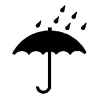 Keep dry |
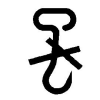 Use no hooks |
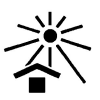 Keep away from heat (solar radiation) |
Back to beginning
Transport
Symbols
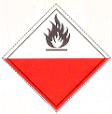 Spontaneously combustible, Class 4.2 IMDG Code |
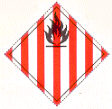 Fire hazard (Flammable solids), Class 4.1 IMDG Code |
 General cargo |
Means of transport
Ship, truck, railroad. Jute is frequently carried by lighter. Moisture damage may thus rapidly occur due to seawater and rain (monsoon rains).
Container transport
Standard containers, subject to compliance with water content of goods and flooring.
Cargo handling
In damp weather (rain, snow), the cargo must be protected from moisture, since jute is strongly hygroscopic and readily absorbs moisture. This may lead to mold and rot. In addition, jute may swell by absorbing water vapor, resulting in an increase in volume of at most 34%. A high water content is difficult to detect from outside, since the jute does not feel damp even with a water content of 34%.
Hooks must not be used for cargo handling. In addition, smoking is absolutely prohibited during cargo handling.
Stowage factor
| 2.50 m3/t (bales) [1] | |
| 1.81 – 1.87 m3/t (bales) [11] | |
| Thai jute: 2.55 – 2.80 m3/t [14] | |
| Vietnamese jute: 4.53 m3/t [14] | |
| Jute waste: 4.67 – 5.52 m3/t [14] | |
| Jute waste: 1.61 – 1.84 m3/t [1] |
Stowage space requirements
Cool, dry
Segregation
Fiber rope, thin fiber nets
Cargo securing
The cargo is to be secured in such a way that the bales or strapping are not damaged. Undamaged strapping is essential to maintain compression of the bales during transport. If the strapping is broken, compression is diminished, which at the same time results in an increased supply of oxygen to the inside of the bales. This in turn increases the risk of combustion or feeds a fire which has already started.
Back to beginning
Risk factors and loss prevention
RF Temperature
Jute requires particular temperature, humidity/moisture and possibly ventilation conditions (SC VI) (storage climate conditions).
| Designation | Temperature range | Source |
| Favorable travel temperature range: | no lower limit – < 25°C | [1] |
| Optimum travel temperature | 18 – 22°C | [1] |
| Autoignition temperature | 107°C | [1] |
Jute bales must be stowed away from heat sources.
Every hold should be equipped with means for measuring temperature. Measurements must be performed and recorded daily.
Back to beginning
RF Humidity/Moisture
Jute requires particular temperature, humidity/moisture and possibly ventilation conditions (SC VI) (storage climate conditions).
| Designation | Humidity/water content | Source |
| Relative humidity | 65% | [1] |
| Water content | 12.5 – 13.7% | [1] |
| 14.0% | [14] | |
| Maximum equilibrium moisture content | 65% | [1] |
Jute must be protected from sea, rain and condensation water and also from excessive levels of relative humidity, as it has only slight weather resistance. Moisture, light and heat cause jute to lose strength if it is exposed to moisture in an enclosed space for an extended period.
On acceptance of a consignment, particular attention should be paid to „country damage. Wetting may have dried out externally, but slight discoloration and almost invisible stains are an indication of such damage. The damage may have extended to the middle of the bale, after which the jute will become soft, dark and rotten and may even completely break down if exposure is for an extended period, decaying away to a dusty powder. It is essential to avoid wetting contamination.
In addition to „country damage“, „heart damage“ also occurs in jute. An excessively high water content (> 17%) within the bales may result in self-heating, mold, rot and decay. Externally, the bales still appear dry; only the musty odor and the loss of strength indicate „heart damage.
Of all vegetable textile fibers, jute is the most highly hygroscopic (hygroscopicity). The critical point is at an equilibrium moisture content of just 65%. Jute may absorb up to 34% moisture without feeling moist. Therefore, when the cargo is accepted a moisture measurement should be carried out and, in the event of lighterage, so too should a seawater test using the silver nitrate method . Moisture-damaged bales must not be accepted.
 Figure 5 |
Jute is greatly at risk from cargo sweat, so the bales must not be placed directly against steel walls. It is advisable to cover jute bales with mats or cloths. Cargo sweat may turn the jute red or black and cause decay.
Back to beginning
RF Ventilation
Jute requires particular temperature, humidity/moisture and possibly ventilation conditions (SC VI) (storage climate conditions).
If the product is loaded for shipment in a dry state, it does not have any particular ventilation requirements.
Problems arise if the product, packaging and/or ceiling/flooring are too damp. In this case, the following ventilation measures should be implemented:
Air exchange rate: 10 changes/hour (airing)
Moisture must constantly be eliminated, to reduce mold and bacterial activity.
Since jute very readily absorbs oxygen, before anybody enters the hold, it must be ventilated and, if necessary, a gas measurement carried out, since a shortage of oxygen may endanger life.
Back to beginning
RF Biotic activity
Jute displays 3rd order biotic activity.
It belongs to the class of goods in which respiration processes are suspended, but in which biochemical, microbial and other decomposition processes still proceed.
Back to beginning
RF Gases
Jute very readily absorbs oxygen. An oxygen shortage may therefore arise in closed holds. Before anybody enters such holds, the holds must be ventilated and, if necessary, a gas measurement carried out.
An increase in CO2 and CO content indicates a cargo fire.
Back to beginning
RF Self-heating / Spontaneous combustion
Jute is assigned to Class 4.1 of the IMDG Code (Flammable solids). However, its specific characteristics and negative external influences (see below) may cause it to behave like a substance from Class 4.2 (Substances liable to spontaneous combustion) of the IMDG Code or ADR.
Its high cellulose content makes jute particularly liable to catch fire through external ignition. Therefore, it must always be protected from sparks, fire, naked lights and lit cigarettes. Fire may spread through the entire consignment and accompanying cargo and encroach into other holds through overheated bulkheads (increased general average risk). In accordance with the IMDG Code, ventilation openings leading into the hold should be provided with spark-proof wire cloth.
In addition to external ignition, jute is also liable to thermal, chemical and microbial self-heating/spontaneous combustion. Chemical self-heating/spontaneous combustion in particular occurs on contact with fats and oils and with oxidizing agents. Moist jute in large stacks is highly susceptible to microbial spontaneous combustion. The very well developed oxygen-rich lumen of jute fibers provides ideal conditions for a smoldering fire. Smoking is absolutely prohibited in holds and containers.
Fire-fighting is best performed using CO2 . It is very difficult to extinguish a fire because of the excess of oxygen in the jute fiber, which maintains the fire from the inside. Small fires may also be extinguished with powder or foam extinguishers.
Water must not be used for fire-fighting, since the swelling capacity of the jute fibers (at most 34% increase in volume) may cause damage to the hold or container walls.
Back to beginning
RF Odor
| Active behavior | Jute has a slight, unpleasant odor. Musty smelling bales are an indication of mold and rot. |
| Passive behavior | It is sensitive to unpleasant or pungent odors. |
Back to beginning
RF Contamination
| Active behavior | Jute does not cause contamination. |
| Passive behavior | It is sensitive to contamination by dust (especially ore dust), coal, metal filings, fertilizers, dirt, fats and oils as well as oil-containing goods, such as oil-bearing seeds/fruits, copra, raw wool etc., since oil-impregnated fibers promote self-heating/cargo fire. Holds or containers must accordingly be clean. |
Back to beginning
RF Mechanical influences
Care must be taken to ensure that mechanical influences do not cause damage to strapping, which increases the risk of fire by relieving the compression of the bales and allowing a greater supply of oxygen. Hooks must not be used.
Back to beginning
RF Toxicity / Hazards to health
Jute very readily absorbs oxygen. An oxygen shortage may therefore arise in closed holds and containers. Before anybody enters such holds, the holds must be ventilated and, if necessary, a gas measurement carried out. The TLV for CO2 concentration is 0.49 vol.%.
Back to beginning
RF Shrinkage/Shortage
Unclearly marked bales may result in losses of volume due to incorrect delivery.
Back to beginning
RF Insect infestation / Diseases
Jute fibers are resistant to microorganisms.
Back to beginning
